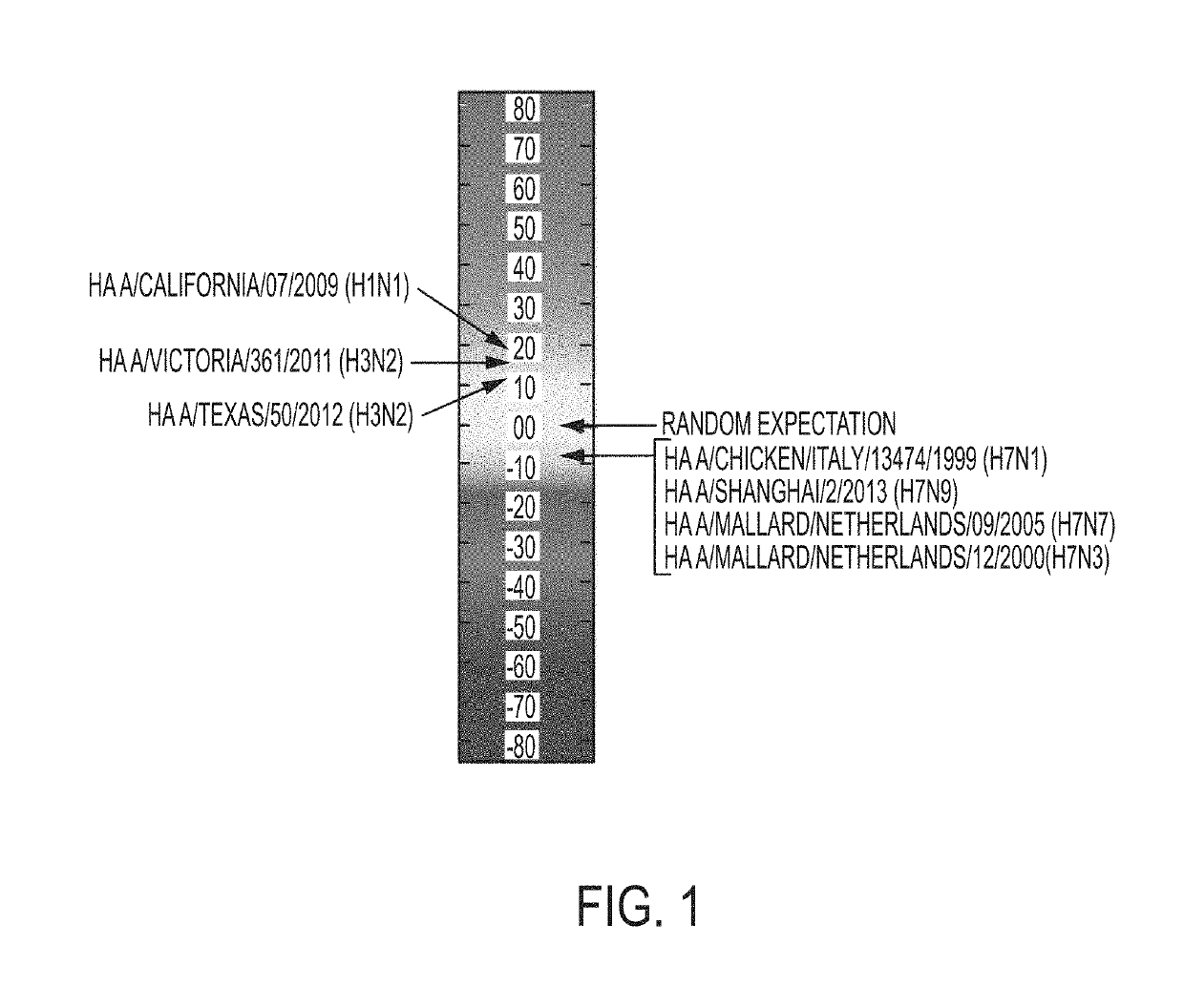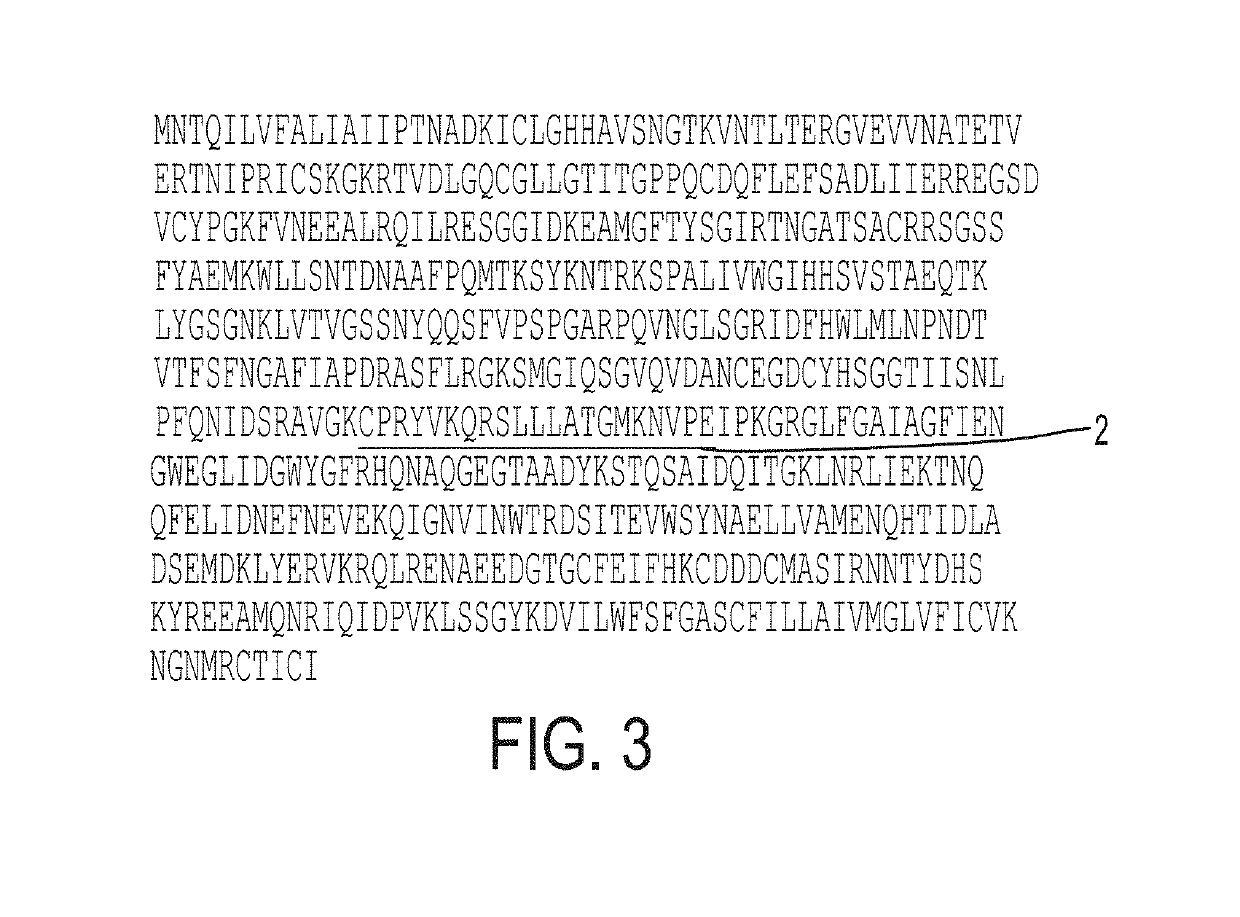Modified H7 hemagglutinin glycoprotein of the Influenza A/Shanghai/2/2013 H7 sequence
a technology of hemagglutinin and glycoprotein, which is applied in the field of sequence modification of the h7 hemagglutinin glycoprotein of the influenza a/shanghai/2/2013 h7 sequence, can solve the problems of poor efficacy of the h7 hemagglutinin vaccine compared to other subunits and seasonal influenza vaccines, and the use of adjuvants, so as to improve the efficacy of vaccine antigens
- Summary
- Abstract
- Description
- Claims
- Application Information
AI Technical Summary
Benefits of technology
Problems solved by technology
Method used
Image
Examples
Embodiment Construction
[0058]Disclosed herein is the modified sequence of the H7 hemagglutinin (FIG. 2). This sequence modification is a 3 amino acid change to the Influenza A / Shanghai / 2 / 2013 H7 cluster 321 (FIG. 6). This cluster was chosen by immunoinformatic analysis for modification because of its predicted T cell epitope content and high predicted cross reactivity to human proteins (FIG. 4 and FIG. 5). The three amino acid change created sequence with notably less human cross conservation (FIG. 6 and FIG. 8) while retaining HLA binding potential (FIG. 7).
[0059]Using the EpiMatrix toolkit (EpiVax, Providence, R.I., USA), a comparison of the potential immunogenicity of H7 HA to recent seasonal influenza A strain HA proteins predicted a very low potential immunogenicity for the H7 HA proteins. The analysis also identified key H7N9 HA epitopes that have a high degree of cross-conservation at the T cell receptor (TCR)-facing residues with T cell epitopes in the human genome.
[0060]Immunoinformatics was used...
PUM
| Property | Measurement | Unit |
|---|---|---|
| temperature | aaaaa | aaaaa |
| size | aaaaa | aaaaa |
| antibody titers | aaaaa | aaaaa |
Abstract
Description
Claims
Application Information
 Login to View More
Login to View More - R&D
- Intellectual Property
- Life Sciences
- Materials
- Tech Scout
- Unparalleled Data Quality
- Higher Quality Content
- 60% Fewer Hallucinations
Browse by: Latest US Patents, China's latest patents, Technical Efficacy Thesaurus, Application Domain, Technology Topic, Popular Technical Reports.
© 2025 PatSnap. All rights reserved.Legal|Privacy policy|Modern Slavery Act Transparency Statement|Sitemap|About US| Contact US: help@patsnap.com



